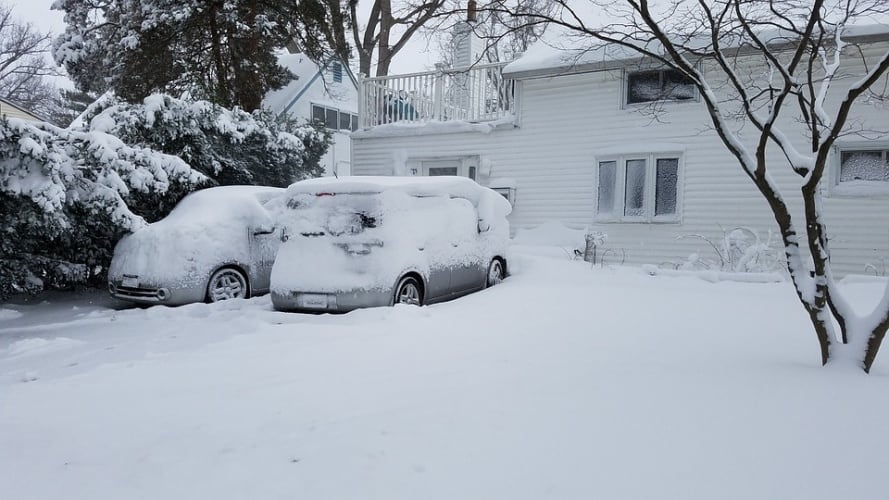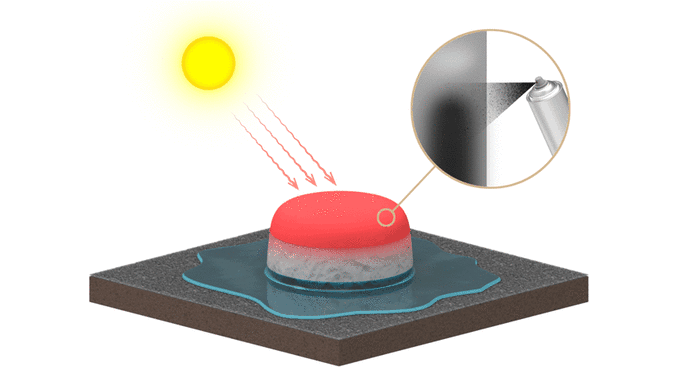
Known as the Melt Mat, it consists of a thin sheet of aluminium spray-coated with an ultra-flat black paint. When draped over a snowbank, the Melt Mat absorbs energy from the sun’s rays at an accelerated rate, transferring the heat directly onto the highly-reflective snow. According to the study, which is published in the journal Langmuir, snowbanks can melt three times faster when a thermally absorptive blanket is placed on top.
"Generally, snow reflects about three-quarters of the sun's radiation back into the air, so it's actually really hard for the sun to melt a snowbank," said Jonathan Boreyko, an assistant professor of biomedical engineering and mechanics and the team's faculty advisor."
“Even if temperatures are above freezing and the sun is out, the snow's surface just bounces most of the heat right off. That's the fundamental problem we're trying to address here."

(Credit: Virginia Tech)
Some cities in the US spend up to $125m each year clearing snow from roads and public spaces, using a combination of vehicles and gas-powered heaters. In 2016, Boreyko pitched the idea for a thermal absorptive blanket, something that would not only absorb the sun's heat but could also conduct that heat across the blanket's surface to accelerate melting times. The students then spent a year designing and experimenting with different materials, finally settling on the Melt Mat’s configuration.
Having obtained a provisional patent, the Virginia Tech team now hopes to licence the technology to an established company and work towards a full patent.
“The idea for a thermal absorptive blanket is novel, but also very practical," said Boreyko. "For novelty's sake, the team really needed to go for a journal publication. For practicality's sake, we went for a patent. They ended up getting both."




April 1886: the Brunkebergs tunnel
First ever example of a ground source heat pump?